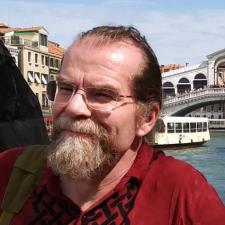
Paul W. answered • 04/09/19
Dedicated to Achieving Student Success in History, Government, Culture
Steve M.'s answer is correct. It's difficult for most people living in the United States in the early-21st century to comprehend the extant to which the Christian Church dominated life in Europe throughout the Middle Ages (barring, of course, the Muslim kingdoms in Iberia, Jewish communities, and the remaining regions where pagan Faiths were still practiced).
The schedule of the year, of the week, and of the hours of the day were all arranged around the Christian Faith as interpreted by the Church (for some 600 years there was only one Christian Church in Europe; following the Great Schism in 1054, Western, Central, and even portions of Eastern Europe recognized the 'Catholic' Church, based in Rome, while the rest of Eastern Europe followed the 'Eastern Orthodox' Faith based in Constantinople).
The schedule for the year was arranged by both the seasons governing agricultural activity and specific Holy Days, which, not surprisingly, usually coincided. The reason for this is that, at a very early date, the Christian Faith, as a strategy for easing the process of conversion, adopted pagan holidays that were themselves based on the agricultural rhythm of the year for major Christian Holy Days. Examples include Christmas (the winter solstice) and Easter (the spring solstice). The division of the year into twelve months was basically inherited from the practices of the Roman Empire.
The schedule for the week was arranged around the primary day of communal worship, Sunday. However, it should be noted that throughout the length of a year there were a large number of major and minor Holy Days which lay people, as opposed to the clergy, observed (participated in) to one degree or another. For instance, there were a seemingly endless number of Saint's Days that, to one degree or another, were observed. Each guild of craftsmen, for instance, had their patron saint whom they celebrated on their respective saint's day with a special mass in the church associated with the guild in question and a parade through the town or city with a statue of the saint in question borne aloft by the members of the guild.
It's no accident that our word, 'Holiday', has its origins in the term Holy Day; these were days for public celebration. Along with parades there were fairs, entertainers, food and alcohol vendors, and public feasting. Needless to say, it was far from unusual for these celebrations to get out of hand and, not surprisingly, the less than holy behavior that accompanied such saint's days was the target of criticism during the Protestant Reformation.
During an average weekday, an individual would pray in the morning after rising, he or she might pray at a shrine at one point or another during the day, would give thanks before meals, and would pray before going to sleep at the end of the day. It was far from unusual to attend church during weekdays and, for the nobility who usually had their own private chapels with their own chaplain, it was common practice to attend mass every morning.
Just as the Muslim day is divided into sections by the call to prayer, the people of Medieval Europe would be made aware of specific times of the day by the ringing of church bell at local churches and monasteries that called members of the clergy to gather for periods of prayer observed at specific times of the day (of course, Medieval people could also observe the location of the sun in the sky to determine the time of day). The clergy were able to determine when specific periods of prayer should take place with the help of sun dials and, beginning in the 13th century, mechanical clocks (significantly, the word 'Clock' comes from the Latin word for a bell).





